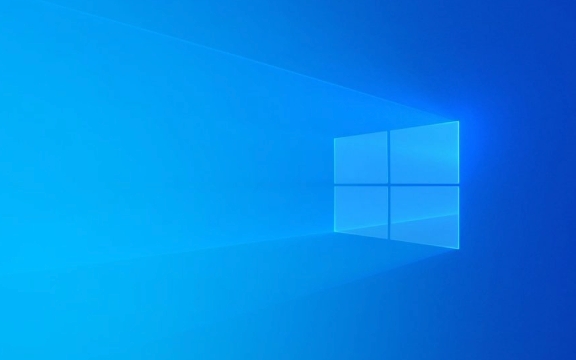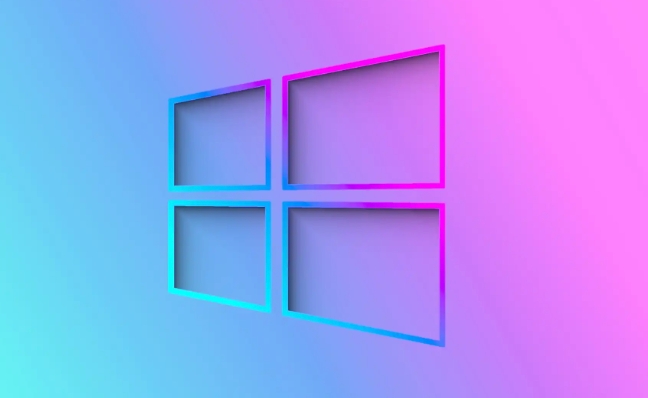Windows stores update files primarily in the SoftwareDistribution folder. The exact path is C:\Windows\SoftwareDistribution, where downloaded patches and installation files are kept temporarily. Inside this folder, subfolders like Download, Datastore, and WUDownloadCache store specific types of update-related data. To safely clear update files, first stop the Windows Update service via services.msc, delete the contents of the SoftwareDistribution folder, then restart the service. Knowing this location helps users free up disk space, troubleshoot failed updates due to corruption, or manage updates manually in enterprise settings.

Windows stores its update files in several locations depending on what kind of update it is and how it's being managed. In general, the main folder where Windows keeps downloaded update files is C:\Windows\SoftwareDistribution.

This folder holds temporary files related to Windows Updates, including downloaded patches and installation files. If you ever need to clear space or troubleshoot update issues, this is one of the key places to look.

Where Exactly Are Update Files Stored?
The primary storage location for Windows updates is the SoftwareDistribution folder, found at:
C:\Windows\SoftwareDistribution
Inside this folder, you’ll usually find subfolders like:

- Download – where the actual update files are stored before installation.
- Datastore – contains metadata and tracking info about available and installed updates.
- WUDownloadCache – used in some versions for caching downloaded content.
These files are not meant to be modified manually, but knowing where they are can help with troubleshooting or freeing up disk space.
How to Clear Update Files Safely
If you're running low on space or having trouble installing updates, clearing out old update files can help. Here’s how to do it safely:
-
Stop the Windows Update service:
- Press
Win + R, typeservices.msc, and hit Enter. - Scroll down to Windows Update, right-click and select Stop.
- Press
Navigate to
C:\Windows\SoftwareDistributionand delete everything inside.Restart the Windows Update service the same way you stopped it.
This process won’t harm your system — Windows will rebuild what it needs when checking for new updates.
Why You Might Want to Know This
There are a few practical reasons why someone might care where Windows stores update files:
- Freeing up disk space – The Download folder can grow quite large over time.
- Troubleshooting failed updates – Corrupted files in this directory can prevent updates from installing properly.
- Managing updates manually – In enterprise environments, admins sometimes move or inspect these files for deployment purposes.
It’s not something most users need to touch regularly, but understanding where things live under the hood can come in handy.
Basically, that’s where Windows keeps its update files. It's not complicated, but it's good to know in case you ever run into update issues or need to reclaim some space.
The above is the detailed content of Where does Windows store its update files. For more information, please follow other related articles on the PHP Chinese website!

Hot AI Tools

Undress AI Tool
Undress images for free

Undresser.AI Undress
AI-powered app for creating realistic nude photos

AI Clothes Remover
Online AI tool for removing clothes from photos.

Clothoff.io
AI clothes remover

Video Face Swap
Swap faces in any video effortlessly with our completely free AI face swap tool!

Hot Article

Hot Tools

Notepad++7.3.1
Easy-to-use and free code editor

SublimeText3 Chinese version
Chinese version, very easy to use

Zend Studio 13.0.1
Powerful PHP integrated development environment

Dreamweaver CS6
Visual web development tools

SublimeText3 Mac version
God-level code editing software (SublimeText3)
 How to Change Font Color on Desktop Icons (Windows 11)
Jul 07, 2025 pm 12:07 PM
How to Change Font Color on Desktop Icons (Windows 11)
Jul 07, 2025 pm 12:07 PM
If you're having trouble reading your desktop icons' text or simply want to personalize your desktop look, you may be looking for a way to change the font color on desktop icons in Windows 11. Unfortunately, Windows 11 doesn't offer an easy built-in
 Fixed Windows 11 Google Chrome not opening
Jul 08, 2025 pm 02:36 PM
Fixed Windows 11 Google Chrome not opening
Jul 08, 2025 pm 02:36 PM
Fixed Windows 11 Google Chrome not opening Google Chrome is the most popular browser right now, but even it sometimes requires help to open on Windows. Then follow the on-screen instructions to complete the process. After completing the above steps, launch Google Chrome again to see if it works properly now. 5. Delete Chrome User Profile If you are still having problems, it may be time to delete Chrome User Profile. This will delete all your personal information, so be sure to back up all relevant data. Typically, you delete the Chrome user profile through the browser itself. But given that you can't open it, here's another way: Turn on Windo
 How to fix second monitor not detected in Windows?
Jul 12, 2025 am 02:27 AM
How to fix second monitor not detected in Windows?
Jul 12, 2025 am 02:27 AM
When Windows cannot detect a second monitor, first check whether the physical connection is normal, including power supply, cable plug-in and interface compatibility, and try to replace the cable or adapter; secondly, update or reinstall the graphics card driver through the Device Manager, and roll back the driver version if necessary; then manually click "Detection" in the display settings to identify the monitor to confirm whether it is correctly identified by the system; finally check whether the monitor input source is switched to the corresponding interface, and confirm whether the graphics card output port connected to the cable is correct. Following the above steps to check in turn, most dual-screen recognition problems can usually be solved.
 Fixed the failure to upload files in Windows Google Chrome
Jul 08, 2025 pm 02:33 PM
Fixed the failure to upload files in Windows Google Chrome
Jul 08, 2025 pm 02:33 PM
Have problems uploading files in Google Chrome? This may be annoying, right? Whether you are attaching documents to emails, sharing images on social media, or submitting important files for work or school, a smooth file upload process is crucial. So, it can be frustrating if your file uploads continue to fail in Chrome on Windows PC. If you're not ready to give up your favorite browser, here are some tips for fixes that can't upload files on Windows Google Chrome 1. Start with Universal Repair Before we learn about any advanced troubleshooting tips, it's best to try some of the basic solutions mentioned below. Troubleshooting Internet connection issues: Internet connection
 Want to Build an Everyday Work Desktop? Get a Mini PC Instead
Jul 08, 2025 am 06:03 AM
Want to Build an Everyday Work Desktop? Get a Mini PC Instead
Jul 08, 2025 am 06:03 AM
Mini PCs have undergone
 How to clear the print queue in Windows?
Jul 11, 2025 am 02:19 AM
How to clear the print queue in Windows?
Jul 11, 2025 am 02:19 AM
When encountering the problem of printing task stuck, clearing the print queue and restarting the PrintSpooler service is an effective solution. First, open the "Device and Printer" interface to find the corresponding printer, right-click the task and select "Cancel" to clear a single task, or click "Cancel all documents" to clear the queue at one time; if the queue is inaccessible, press Win R to enter services.msc to open the service list, find "PrintSpooler" and stop it before starting the service. If necessary, you can manually delete the residual files under the C:\Windows\System32\spool\PRINTERS path to completely solve the problem.
 How to show file extensions in Windows 11 File Explorer?
Jul 08, 2025 am 02:40 AM
How to show file extensions in Windows 11 File Explorer?
Jul 08, 2025 am 02:40 AM
To display file extensions in Windows 11 File Explorer, you can follow the following steps: 1. Open any folder; 2. Click the "View" tab in the top menu bar; 3. Click the "Options" button in the upper right corner; 4. Switch to the "View" tab; 5. Uncheck "Hide extensions for known file types"; 6. Click "OK" to save settings. This setting helps identify file types, improve development efficiency, and troubleshoot problems. If you just want to view the extension temporarily, you can right-click the file and select "Rename" and press the Esc key to exit, and the system settings will not be changed.







